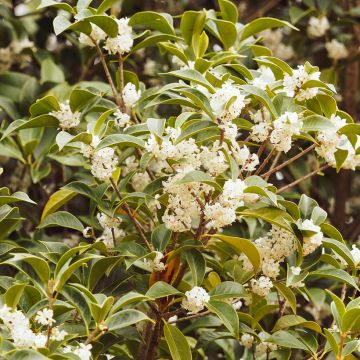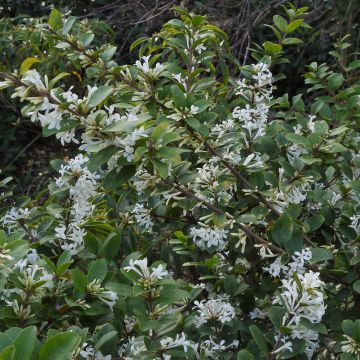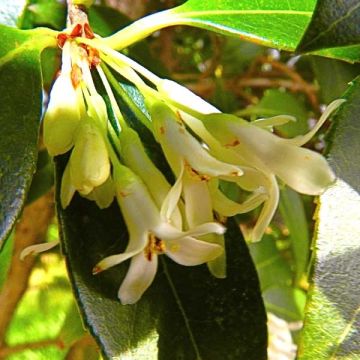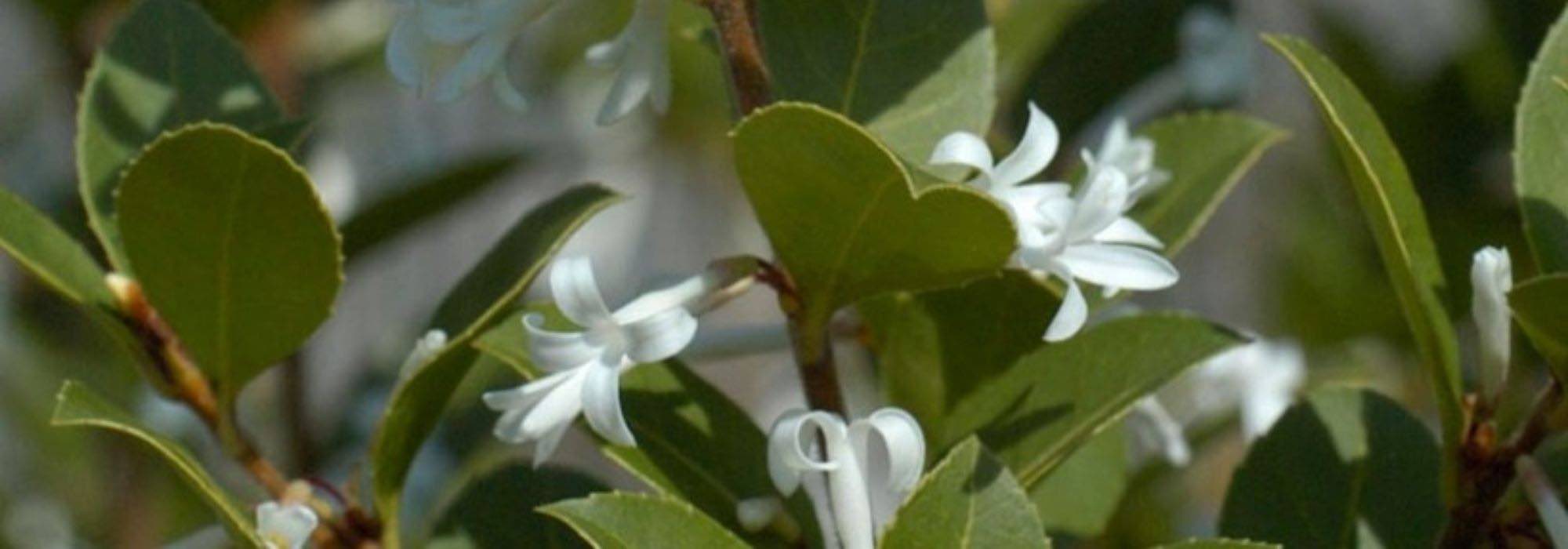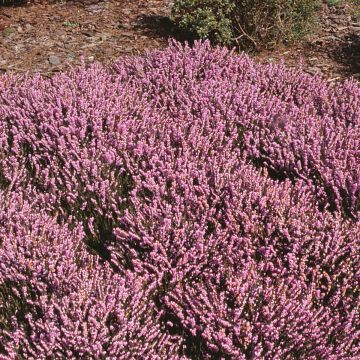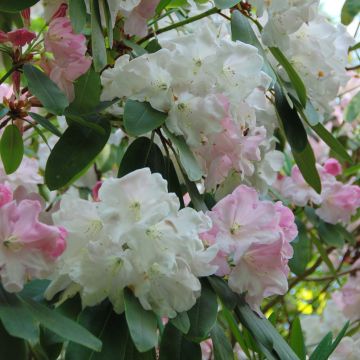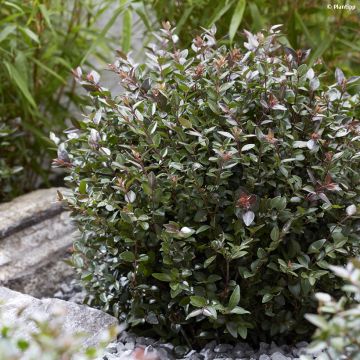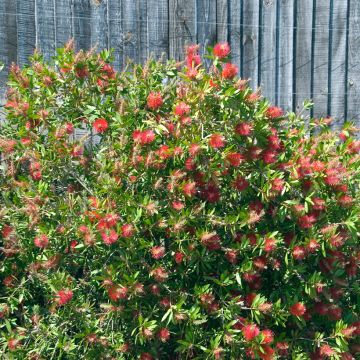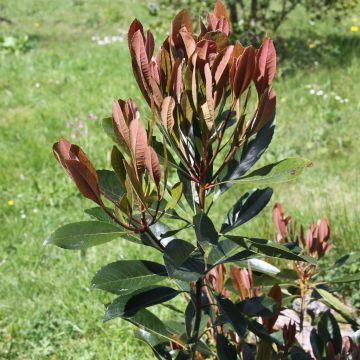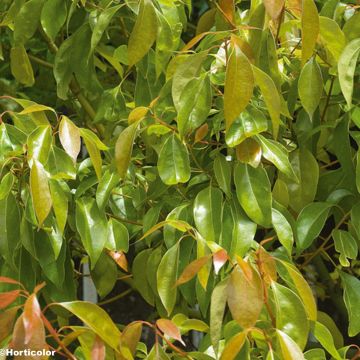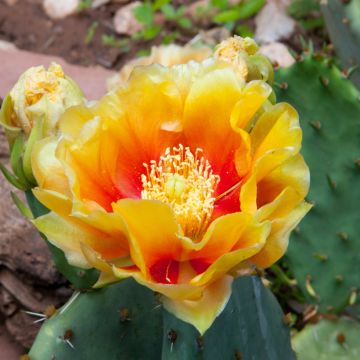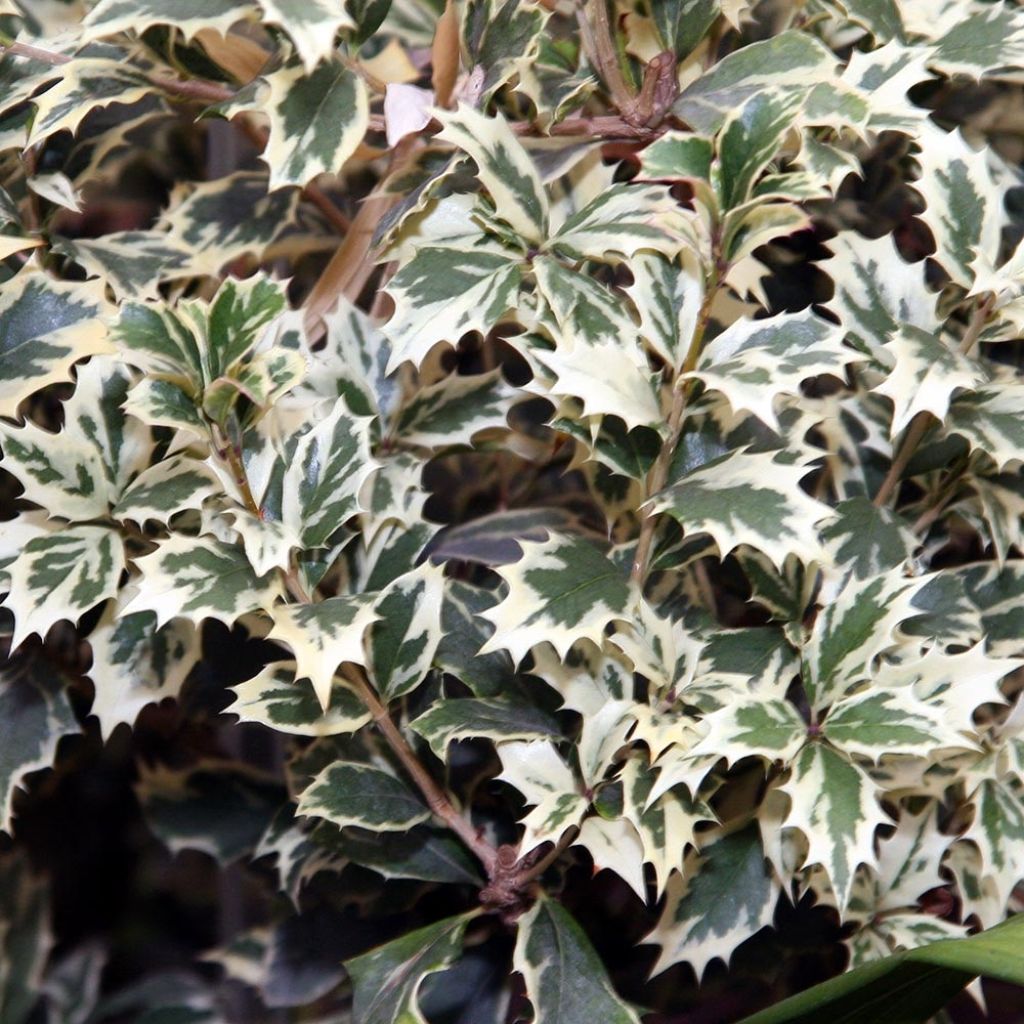

Osmanthus heterophyllus Variegatus
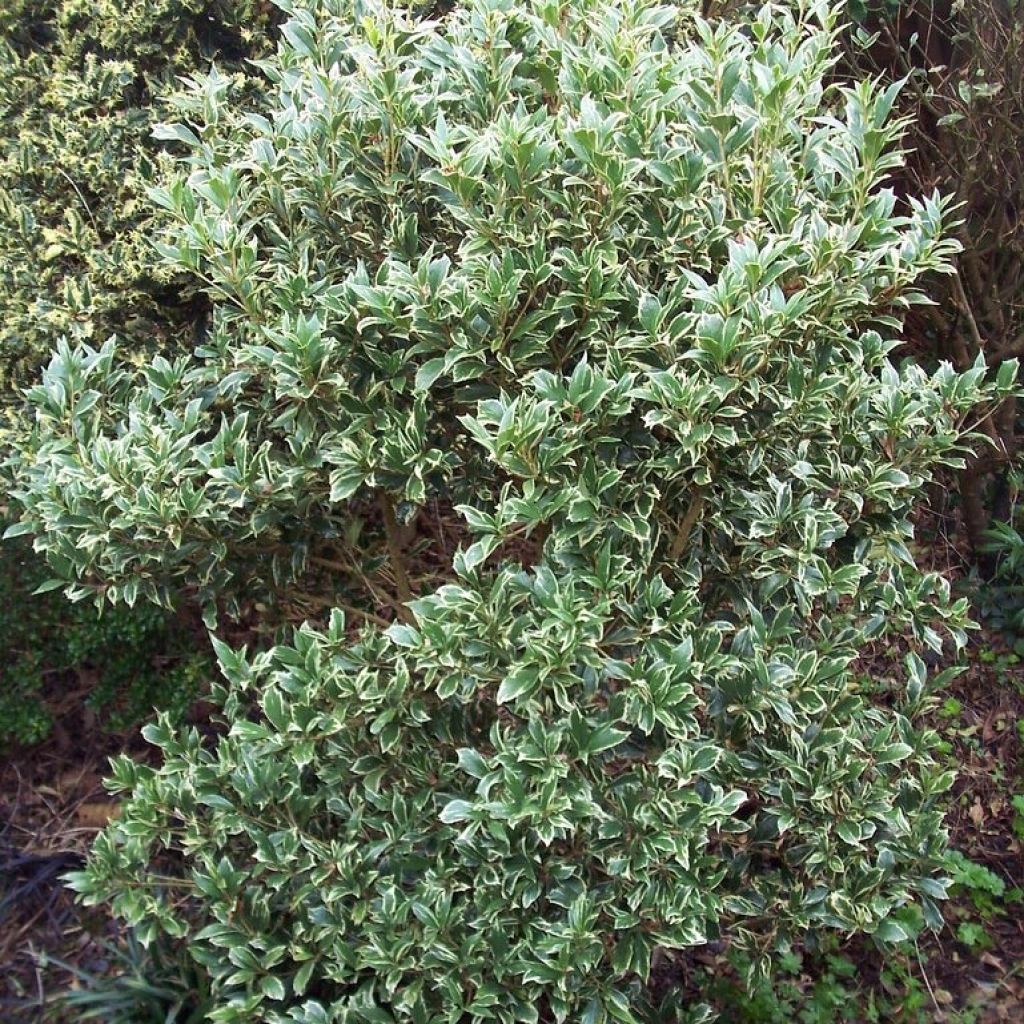

Osmanthus heterophyllus Variegatus
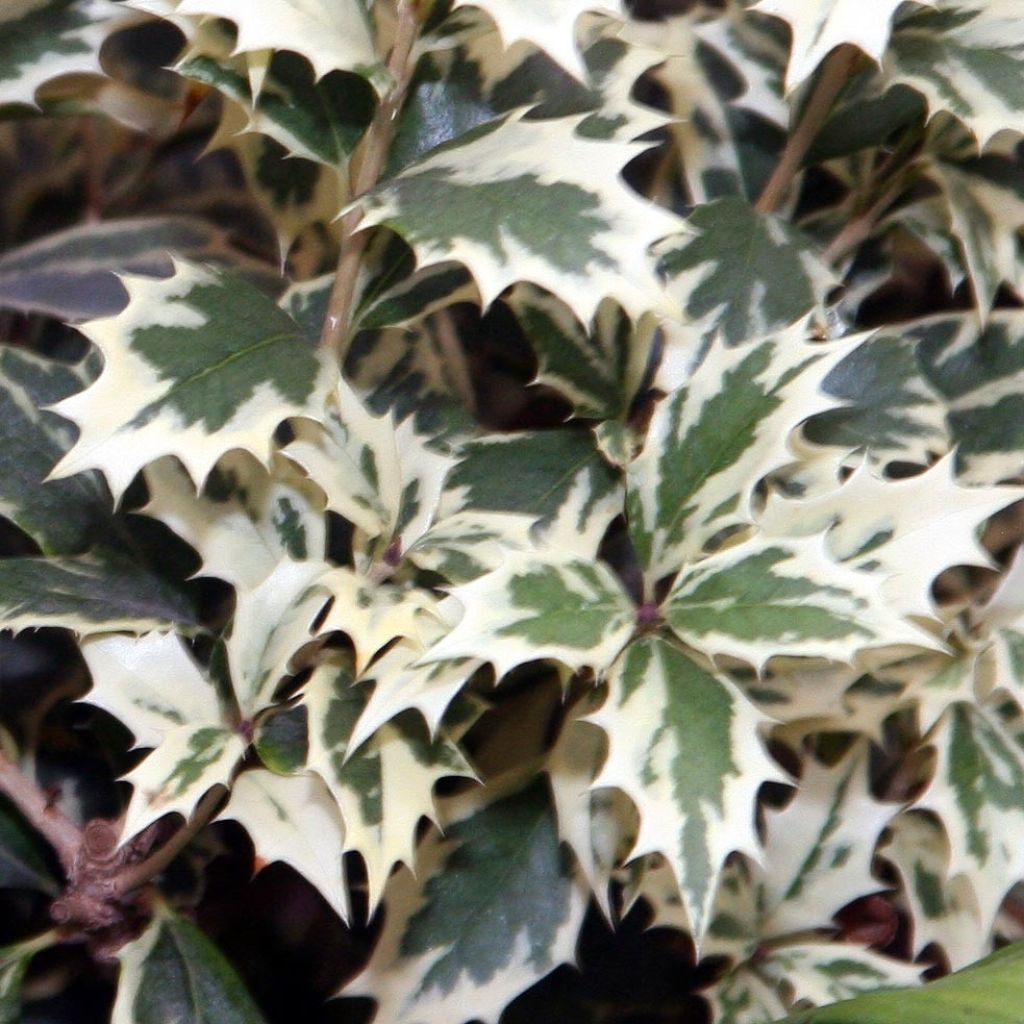

Osmanthus heterophyllus Variegatus
View more pictures
Hide images
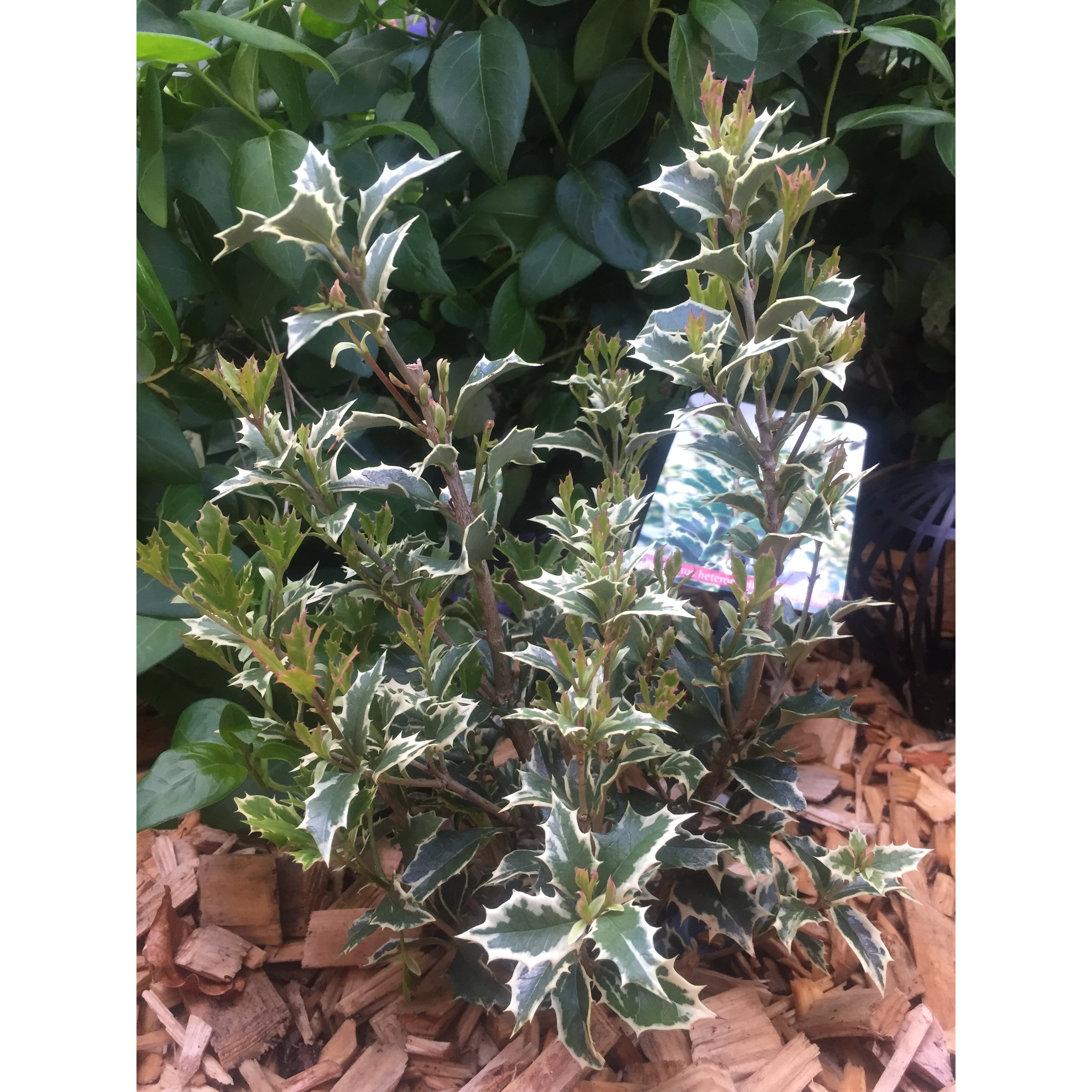
Jennifer T.

Osmanthus variegata
Jennifer T. • 67 FR
Osmanthus heterophyllus Variegatus
Osmanthus heterophyllus Variegatus
Variegated Holly Olive
Beautiful young plant, arrived well-packaged and in excellent condition. All the new shoots of the year intact despite their fragility. Matches the photo exactly.
Robert, 25/04/2023
Special offer!
Receive a €20 voucher for any order over €90 (excluding delivery costs, credit notes, and plastic-free options)!
1- Add your favorite plants to your cart.
2- Once you have reached €90, confirm your order (you can even choose the delivery date!).
3- As soon as your order is shipped, you will receive an email containing your voucher code, valid for 3 months (90 days).
Your voucher is unique and can only be used once, for any order with a minimum value of €20, excluding delivery costs.
Can be combined with other current offers, non-divisible and non-refundable.
Home or relay delivery (depending on size and destination)
Schedule delivery date,
and select date in basket
This plant carries a 24 months recovery warranty
More information
We guarantee the quality of our plants for a full growing cycle, and will replace at our expense any plant that fails to recover under normal climatic and planting conditions.
Would this plant suit my garden?
Set up your Plantfit profile →
Description
Osmanthus heterophyllus 'Variegatus' is an evergreen bush with a very dense and compact habit, with beautiful variegated green foliage tinged with cream. Its white flowering spreads a lovely jasmine fragrance with fruity notes late in the season. With its thick and prickly foliage similar to that of holly, it is attractive all year round and is suitable for creating evergreen, fragrant and defensive hedges. Plant in ordinary soil, in all exposures, in all regions!
Osmanthus heterophyllus, also known as Variegated Osmanthus, is a hardy bush that can withstand temperatures below -15° C (5° F), native to Japan and Taiwan. It belongs to the large and diverse Oleaceae family, which includes plants such as olive trees, lilacs, and jasmines. The cultivar 'Variegatus', sometimes also known as 'Aureomarginatus', was selected for its compact bushy habit, dense foliage, and beautiful variegated, toothed and spiny leaves that resemble holly leaves.
The growth of this bush is slow, but still faster than that of holly. It has a dense, bushy habit, reaching about 1.5 m (4.9 ft) in all directions. Its spiny foliage is composed of oval, thick, leathery leaves, strongly serrated on the edges. The foliage strongly resembles holly leaves. The leaves measure 4.5 cm to 6 cm (1.8 in to 2.4 in) long and 3 cm (1.2 in) wide. The shiny green leaves are initially variegated with yellow, then with cream. From September to October, small clusters of white flowers appear on the new shoots, in the axils of the leaves. They measure 2 mm to 5 mm (0.08 in to 0.2 in) in diameter and emit a complex fragrance reminiscent of jasmine, but lighter, softened by notes of apricot and peach. After pollination by pollinating insects, the flowers are followed by the formation of blue-black fruits, measuring 0.5 cm to 1 cm (0.2 in to 0.4 in) long.
Osmanthus heterophyllus 'Variegatus' is no more difficult to grow than boxwood or holly, adapts to a wide range of soils and exposures, and is not very susceptible to diseases and pests. It can be used as a shrub border, and as a flowering or defensive hedge. Its limited growth allows it to be grown in a large container, on a terrace or balcony. Plant it near a pathway to fully enjoy its fragrance. It tolerates pruning well (in spring to avoid compromising flowering) and is well suited for topiary art and creates beautiful evergreen hedges. It can be combined with other shrubs that flower in autumn and winter, such as Elaeagnus, Mahonia, Sarcococca, or Garrya elliptica, in partial shade.
Properties and uses:
Osmanthus flowers are sometimes mixed with tea for flavouring, or with biscuits, and are locally used in the production of a very ancient traditional Chinese liqueur served in jade cups. Perfumery also uses osmanthus absolute in the composition of high-end perfumes or cosmetics. Osmanthus absolute also has repellent properties against insects. The bark and roots are part of traditional Asian pharmacopoeia and are used to treat various inflammatory conditions or chronic coughs.
Osmanthus heterophyllus Variegatus in pictures
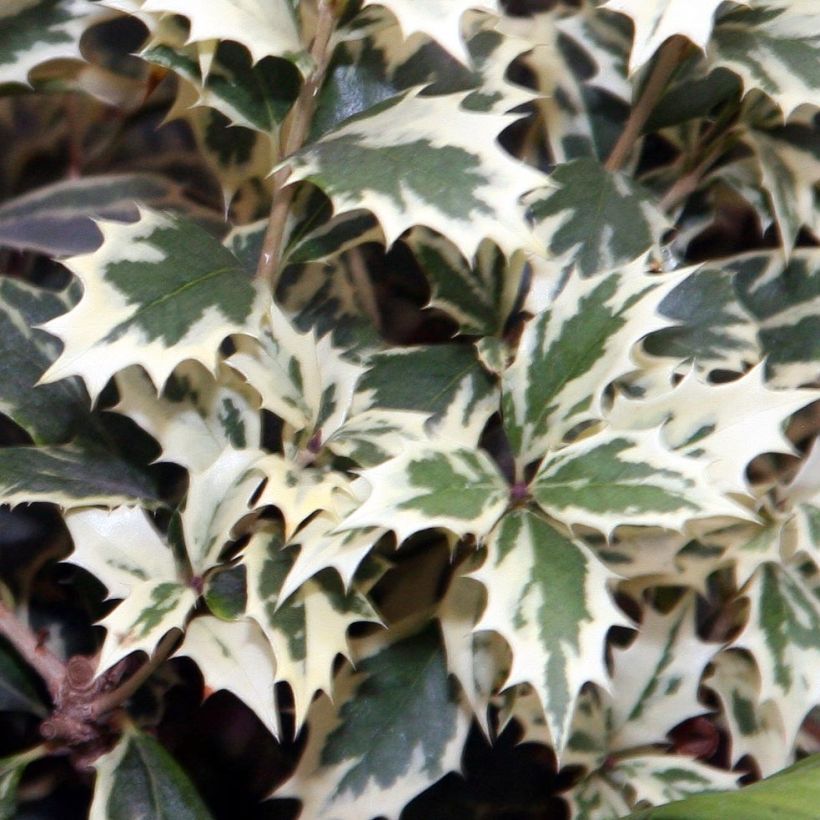

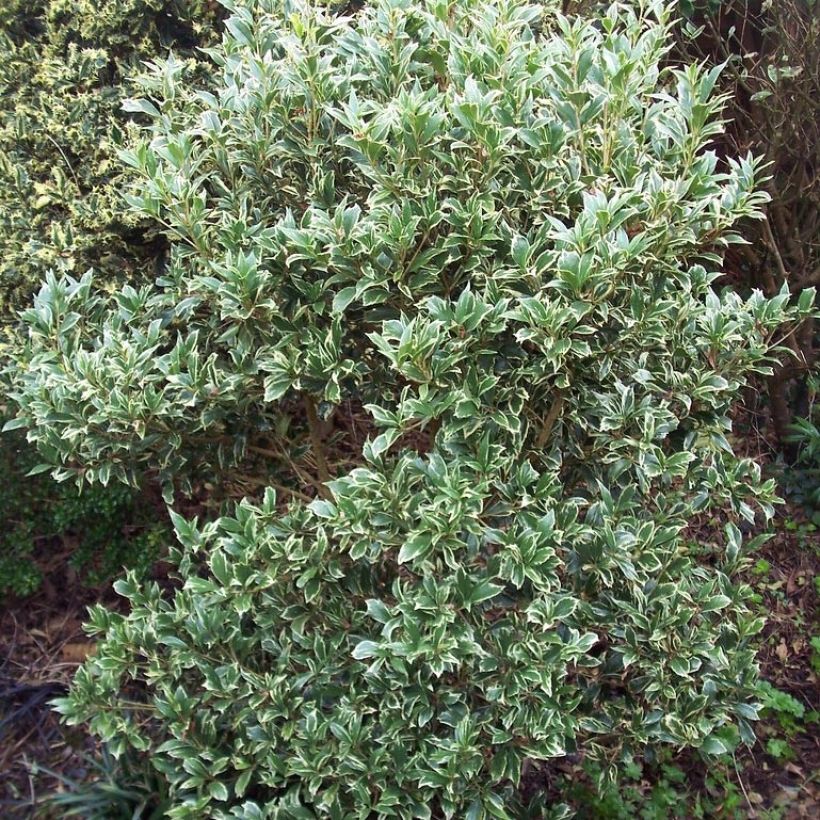

Plant habit
Flowering
Foliage
Botanical data
Osmanthus
heterophyllus
Variegatus
Oleaceae
Variegated Holly Olive
Cultivar or hybrid
Other Osmanthus
View all →Planting and care
Place in full sun or partial shade (even in shade in hot and dry climates) avoiding cold winds but providing good ventilation. It is a plant that loves heat and tolerates sea spray well. Plant it in ordinary, rather light, fertile, moist but well-drained soil. If your soil seems too heavy and clayey, incorporate leaf compost and coarse sand into the planting substrate. Osmanthus is sensitive to intense cold and stagnant humidity, but once established, it is resistant to summer drought. It can be planted throughout the year, except during freezing periods. Osmanthus hedges should be spaced 80 cm (31.5 in) to 1 m (3.3 ft) apart. If planting in a container, a depth of 40 cm (15.7 in) is required. Osmanthus is easy to grow in ordinary soil, even slightly chalky and clayey if the soil is well prepared. Water generously at planting, once or twice a week, to promote establishment. Then continue with regular watering. In case of dry and hot summer, water generously once a week or every 15 days for recently planted subjects. Prune the branches in spring to accentuate its compact and bushy habit. Although this operation is not essential, Osmanthus tolerates it perfectly, but it will take two years to flower abundantly again.
Planting period
Intended location
Care
Planting & care advice
-
, onOrder confirmed
Reply from on Promesse de fleurs
Similar products
Haven't found what you were looking for?
Hardiness is the lowest winter temperature a plant can endure without suffering serious damage or even dying. However, hardiness is affected by location (a sheltered area, such as a patio), protection (winter cover) and soil type (hardiness is improved by well-drained soil).

Photo Sharing Terms & Conditions
In order to encourage gardeners to interact and share their experiences, Promesse de fleurs offers various media enabling content to be uploaded onto its Site - in particular via the ‘Photo sharing’ module.
The User agrees to refrain from:
- Posting any content that is illegal, prejudicial, insulting, racist, inciteful to hatred, revisionist, contrary to public decency, that infringes on privacy or on the privacy rights of third parties, in particular the publicity rights of persons and goods, intellectual property rights, or the right to privacy.
- Submitting content on behalf of a third party;
- Impersonate the identity of a third party and/or publish any personal information about a third party;
In general, the User undertakes to refrain from any unethical behaviour.
All Content (in particular text, comments, files, images, photos, videos, creative works, etc.), which may be subject to property or intellectual property rights, image or other private rights, shall remain the property of the User, subject to the limited rights granted by the terms of the licence granted by Promesse de fleurs as stated below. Users are at liberty to publish or not to publish such Content on the Site, notably via the ‘Photo Sharing’ facility, and accept that this Content shall be made public and freely accessible, notably on the Internet.
Users further acknowledge, undertake to have ,and guarantee that they hold all necessary rights and permissions to publish such material on the Site, in particular with regard to the legislation in force pertaining to any privacy, property, intellectual property, image, or contractual rights, or rights of any other nature. By publishing such Content on the Site, Users acknowledge accepting full liability as publishers of the Content within the meaning of the law, and grant Promesse de fleurs, free of charge, an inclusive, worldwide licence for the said Content for the entire duration of its publication, including all reproduction, representation, up/downloading, displaying, performing, transmission, and storage rights.
Users also grant permission for their name to be linked to the Content and accept that this link may not always be made available.
By engaging in posting material, Users consent to their Content becoming automatically accessible on the Internet, in particular on other sites and/or blogs and/or web pages of the Promesse de fleurs site, including in particular social pages and the Promesse de fleurs catalogue.
Users may secure the removal of entrusted content free of charge by issuing a simple request via our contact form.
The flowering period indicated on our website applies to countries and regions located in USDA zone 8 (France, the United Kingdom, Ireland, the Netherlands, etc.)
It will vary according to where you live:
- In zones 9 to 10 (Italy, Spain, Greece, etc.), flowering will occur about 2 to 4 weeks earlier.
- In zones 6 to 7 (Germany, Poland, Slovenia, and lower mountainous regions), flowering will be delayed by 2 to 3 weeks.
- In zone 5 (Central Europe, Scandinavia), blooming will be delayed by 3 to 5 weeks.
In temperate climates, pruning of spring-flowering shrubs (forsythia, spireas, etc.) should be done just after flowering.
Pruning of summer-flowering shrubs (Indian Lilac, Perovskia, etc.) can be done in winter or spring.
In cold regions as well as with frost-sensitive plants, avoid pruning too early when severe frosts may still occur.
The planting period indicated on our website applies to countries and regions located in USDA zone 8 (France, United Kingdom, Ireland, Netherlands).
It will vary according to where you live:
- In Mediterranean zones (Marseille, Madrid, Milan, etc.), autumn and winter are the best planting periods.
- In continental zones (Strasbourg, Munich, Vienna, etc.), delay planting by 2 to 3 weeks in spring and bring it forward by 2 to 4 weeks in autumn.
- In mountainous regions (the Alps, Pyrenees, Carpathians, etc.), it is best to plant in late spring (May-June) or late summer (August-September).
The harvesting period indicated on our website applies to countries and regions in USDA zone 8 (France, England, Ireland, the Netherlands).
In colder areas (Scandinavia, Poland, Austria...) fruit and vegetable harvests are likely to be delayed by 3-4 weeks.
In warmer areas (Italy, Spain, Greece, etc.), harvesting will probably take place earlier, depending on weather conditions.
The sowing periods indicated on our website apply to countries and regions within USDA Zone 8 (France, UK, Ireland, Netherlands).
In colder areas (Scandinavia, Poland, Austria...), delay any outdoor sowing by 3-4 weeks, or sow under glass.
In warmer climes (Italy, Spain, Greece, etc.), bring outdoor sowing forward by a few weeks.































